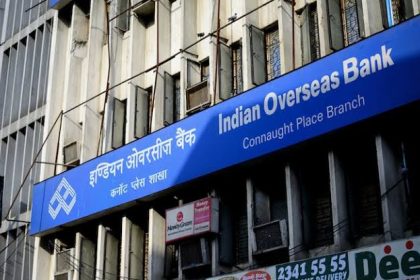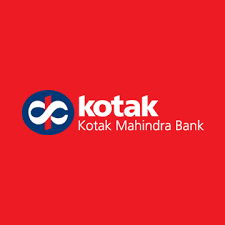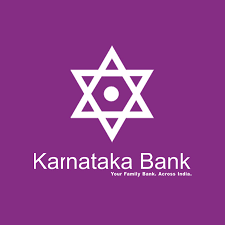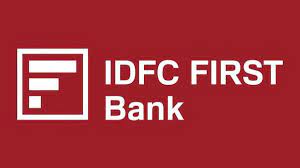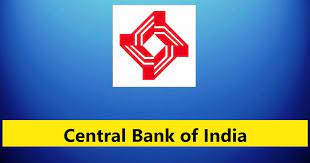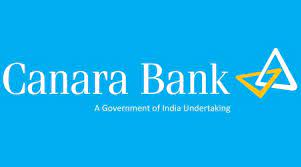Introduction of Banking System in India
In order to understand the banking system in India, it is imperative to know how the banks in India are classified, i.e. the types of banks in India. There are basically 5 types of banks in India, viz.:
- Commercial Banks
- Small Finance Banks
- Co-Operative Banks
- Payments Banks
- Foreign Banks
Note: As per the RBI, every bank in India is put in either the list of Scheduled Banks or the Non-Scheduled Banks. All the aforementioned banks are counted under the list of scheduled banks of India.
Bank Timings in India: Banks in India usually operate from 9AM in the morning and close their business hours for customers by 4PM in the evening. However, working hours are usually extended 2 hours after the business hours.
Also Read: Bank timings of the major banks in India
Basic functions of a commercial bank are:
- Accepting deposits: Deposits in the form of savings account, current account, etc.
- Lending credit cards: Credit cards are lent based on a customer’s credit score and monthly income. Higher of these two factors accounts for a higher credit limit.
- Issuing loans: Different types of loans like car loan, home loan, education loan and personal loan issued as per one’s credit score, income and age.
- Providing bank lockers: These lockers are providing for safekeeping valuables like gold, important documents, keys, etc.
Different Types of Bank Accounts
There are basically 5 different types of bank accounts available for the public in the commercial banks of India. These are explained below:
Savings Account
A savings bank account, as the name suggests, is provided to put in one’s savings for safekeeping in the bank. On the total amount in a savings bank account, the bank provides interest to the account holder. This interest is credited on a quarterly compound basis.
There are limitations to keeping a specific amount in your savings bank account (except for zero balance accounts). This is done to encourage the habit of savings in the public and keep a check on the purchasing power.
Current Account
This type of account is an account meant for those who have some business and perform transactions multiple times in a day. There are no interests credited by the bank on the deposits of a current account. No minimum account balance needs to be maintained and thus no penalty is levied even if the balance is at zero rupees.
Salary Account
As the name suggests, a salary account is created for those who have a monthly salary. This account is specifically created to pay one’s salary by their organization. This comes with a zero balance feature. Account holder is provided with a free cheque book, e-statement, debit card, etc. Also, net-banking and mobile banking features come pre-activated.
Fixed Deposit Account
A fixed deposit is a type of bank account which has a fixed expiration date and the amount can be deposited once in the tenure of the FD. Also, interest is credited at a pre-determined fixed rate of interest. This is a good investment option for those who do not want to take any risks but want to earn moderate returns on their savings.
A 5-year tax-saving (FD) fixed deposit is a good option for those who are looking to save tax.
Recurring Deposit Account
Recurring deposit is like a fixed deposit with one big difference – the deposits can be made at regular intervals, thus the name ‘recurrent’. However, the rate of interest as well as the tenure of deposit remains fixed.
NRI Account
As the same says, an NRI account is for those customers who live outside, earn in foreign currency but are the citizens of India. Basically, it is for the Non-Resident Indians or NRIs. Some of the NRI accounts can also be opened by the PIOs or the People of Indian Origin. These accounts are offered by the public and private sector banks in India.
Bank Cards
Apart from providing bank account facility to customers, commercial banks also have the authority to provide certain types of bank cards to its customers. These are:
Debit Card
A debit card is issued against one’s bank account. This card is used to make payments without issuing a cheque or in cash. Via a debit card, the amount is deducted directly from the card holder’s checking account. A debit can also be used to withdraw cash from ATMs.
Credit Card
Credit cards are the cards issued to make payments in advance. This means that you can make payments for your utility bills, shopping, restaurant bills, etc. using a credit card without actually paying it from your bank account. The total amount is then sent to the credit card holder’s correspondence by email or post which they need to pay by the due date.
This is like taking a loan from the bank but for a shorter duration. However, customers can also opt to divide their total credit card due amount in smaller installments for the ease of payment. That said, this attracts considerable amount of interest which is calculated on a compounding basis.
The credit card limit is decided basis your credit score (out of 900), income and the previous credit history.
Prepaid Cards
A prepaid card is the opposite of a credit card. This card is not an unsecured loan. You have to load a prepaid card with a certain amount when applying for it. If approved, you are issued this prepaid card which you can use instead of paying in cash or debit card. This card is not linked to your bank account. Suppose you load your prepaid card with Rs. 1 Lakh. Now, you can use this card for any amount up to Rs. 1 lakh. The amount will automatically get transferred into the receiver’s account.
Forex Cards
Just like a prepaid card, a forex card is used to load money in foreign currency. For example, if you’re in USA and want to have an easy mode of payment, you can opt for a forex card. Load your card with the US Dollars of any amount and then, you can use it to make payments anywhere a debit card or credit card is accepted.
Interest Rate
Interest rate is the rate at which the bank provides interest to a bank account holder. This is given as an incentive to the customers to encourage them to keep their money with the bank. The bank then uses this amount for further lending purposes at a higher interest rate. The difference is used to pay you, the bank account holder, the interest on your account. Most of the banks provide an interest @ 2-4% on a savings bank account.
Additional Services
Apart from accepting deposits, giving bank cards, issuing loans, etc. to the public, most of the banks in India provide the following services to their customers:
- NEFT Transfers: National Electronic Fund Transfers
- RTGS Transfers: Real Time Gross Settlement
- IMPS Transfers: Immediate Payment System
- UPI Transfers: Unified Payment System
- Mini Statements: Summary of last 3/5 transactions of a savings account, current account, credit card or overdraft.
- Bank Statements: Monthly (30 days) statement of all the transactions made in a bank account with details.
How are Banks Regulated in India?
All the banks in India, be it a commercial bank, a small finance bank or any other bank, are regulated by the apex body of the Reserve Bank of India (RBI). That said, as per the Banking Regulation Act, 1949, RBI is empowered to supervise and inspect all the commercial banks in India.
RBI is headquartered in the city of New Delhi and is currently governed by Mr. Shaktikanta Das who is the 25th Governor of RBI.
All the commercial banks in India are regulated as per the provisions laid out in the Banking Regulations Act, 1949.
Two of the most important provisions that every commercial bank has to adhere to are explained below:
- CRR or Cash Reserve Ratio – Currently, CRR is set at 4.5%. This means that 4.5% of the total deposits in a bank have to kept in the form of liquid cash with RBI. This money cannot be used for any banking purposes and no interest is provided by the RBI on in. This must be maintained at all times.
- SLR or Statutory Liquidity Ratio – Currently, SLR is set at 18%. SLR is the minimum percentage of deposits that a bank has to maintain in the form of cash, gold, etc. This means that currently, 18% of every commercial banks total deposits (Net Demand and Time Liabilities) must be in the form of liquid cash.
Types of Banks in India
Banks in India can be grouped into two categories:
Scheduled Banks:
- Listed in the 2nd Schedule of the Banking Regulations Act, 1949
- Paid-up capital not less than Rs. 5 lakhs
- Can get loans (borrow money) from RBI on bank rate
- Have to keep CRR with RBI
- Deposits are covered under DICGC*
- Examples: SBI, HDFC, Jana Small Finance Bank
Non-scheduled Banks:
- Not listed in the 2nd schedule of the Banking Regulations Act, 1949
- Paid-up capital less than Rs. 5 lakhs
- Cannot get loans from RBI
- Have to follow CRR but with themselves
- Deposit not covered under DICGC*
- Examples: Apani Sahakari Bank Ltd. Ahmedabad
*DICGC: Deposit Insurance Credit Guarantee Corporation – a wholly owned RBI subsidiary.
There is a 3rd category too, viz., Development Banks. These banks are not for the purpose of earning profits. Instead, as the name suggests, development banks are special financial institutions that are created to cater to the short term as well as long term credit lending needs of the public as well as private institutions.
Examples: SIDBI (Small Industries Development Bank of India), NABARD (National Bank for Agriculture & Rural Development), EXIM (Export-Import Bank of India), NHB (National Housing Bank)
Classification of Schedules Banks in India
There are 6 types of scheduled banks in India, as per the RBI database. These are:
- Public Sector Banks
- Private Sector Banks
|
Total Private Sector Banks in India
|
| 1. Axis Bank |
2. HDFC Bank |
| 3. ICICI Bank |
4. Kotak Mahindra Bank Ltd. |
| 5. YES Bank |
6. IDBI Bank Ltd. |
| 7. City Union Bank Ltd. |
8. DCB Bank |
| 9. Federal Bank Ltd. |
10. Dhanlaxmi Bank |
| 11. IndusInd Bank Ltd. |
12. Bandhan Bank |
| 13. Karur Vysya Bank Ltd. |
14. CSB Bank |
| 15. RBL Bank |
16. Karnataka Bank Ltd. |
| 17. IDFC Bank |
18. Jammu & Kashmir Bank Ltd. |
| 19. Nainital Bank |
20. South Indian Bank Ltd. |
| 21. Tamilnad Mercantile Bank Ltd. |
- Small Finance Banks
|
Total Small Finance Banks in India
|
| 1. AU Small Finance Bank |
2. ESAF Small Finance Bank |
| 3. Capital Small Finance Bank |
4. Fincare Small Finance Bank |
| 5. Equitas Small Finance Bank |
6. Jana Small Finance Bank |
| 7. Suryodaya Small Finance Bank |
8. Shivalik Small Finance Bank |
| 9. Ujjivan Small Finance Bank |
10. North East Small Finance Bank |
| 11. Utkarsh Small Finance Bank |
12. Unity Small Finance Bank |
- Payments Banks
|
Total Payment Banks in India
|
| 1. India Post Payments Bank Ltd. |
2. Fino Payments Bank Ltd. |
| 3. Paytm Payments Bank Ltd. |
4. Airtel Payments Bank Ltd. |
- Foreign Banks
- Regional Rural Banks
Classification of Commercial Banks in India
Commercial banks (listed under the Scheduled Banks) in India are classified into 3 different categories by the Reserve Bank of India (RBI). These are:
Public Sector Banks
Also called as nationalized banks, public sector banks have the majority of their share (more than 50%) owned by the Government of India. These banks are run with the primary aim of public interest, not profit. There are total 12 public sector banks in India.
Some of the examples of public sector banks in India: SBI, PNB, UCO Bank.
Private Sector Banks
Private sector banks are the banks which are wholly owned by individuals and the majority of equity is also with the owner – not with the government. These banks operate for the primary motive of profit generation. There are total 21 private sector banks in India.
Some of the examples of private sector banks in India: Axis Bank, HDFC Bank, ICICI Bank.
Foreign Banks
Foreign banks, as the name suggests, are the banks that are headquartered outside India but have their branches operating in other countries as well. In India, we have a total of 46 foreign banks in India. Some of the examples of foreign banks in India: Barclays Bank Plc., Standard Chartered Bank.
Regional Rural Banks
Regional rural banks are commercial banks wholly owned and run by the Government of India. These banks are created to cater to the needs of the rural India. These are run at regional level of different Indian States. There are currently 42 regional rural banks in India.
Some of the examples of regional rural banks in India: Punjab Grameen Bank, Utkal Grameen Bank, Uttar Pradesh Grameen Bank.
Small Finance Banks
Small Finance Banks are the banks that are specially created to cater to the financial needs of the unserved regions of India. These banks are run by the Reserve Bank of India. Their clientele includes small business units, micro and medium scale industries, small and marginalized farmers, etc. There are currently 12 small finance banks in India. These banks cannot issue credit cards but they have the authority to issue debit cards.
Payments Banks
Another type of banks under the scheduled list of banks by RBI, payment banks are the banks created to further banking inclusion of the unbanked portion of India. A major part of Indian population is still untouched by the banking and this is the very purpose of payments banks. These banks operate on a small scale. These banks can take up to Rs. 2 lakh of deposits but cannot issue credit cards or loans.
Payments banks cannot cater to the NRI customers.
Aspects to Check Before Choosing a Bank
When choosing a bank to open a bank account, be it a savings account, current account or a credit card account, take into account some of the factors mentioned below into consideration:
If the bank you’re choosing is not scheduled, it is not a good idea to put your hard-earned money in it. The bank is not listed in the 2nd Schedule of the Banking Regulations Act, 1949 because it doesn’t fulfil the necessary criterion as per the RBI and thus can be risky to put your money in.
- Are the deposits under this bank covered under the DICGC?
Deposits made in banks covered under the DICGC or the Deposit Insurance and Credit Guarantee Corporation are insured for up to Rs. 5 lakhs. This means that in the case of an insolvency, your deposits of up to Rs. 5 lakhs will be covered under the DICGC and will be credited to you.
- Does the bank have enough branches in your city?
If the bank you’re choosing doesn’t have enough branches in your city, it might become problematic for you in times of need. Always choose a bank which has well-connected branches in your city.
- Does the bank cater to your specific needs?
If you are looking for a higher interest, you might want to opt for a small finance bank. However, if your biggest interest is long term deposits and highest safety, going for a nationalized bank is your best bet.
Banking in India – FAQs
1. Who regulates the banking system of India?
All the scheduled banks in India are regulated by the apex banking body – RBI or the Reserve Bank of India.
2. Where is the RBI headquartered?
RBI is headquartered in New Delhi (Sansad Marg).
3. What is the difference between a public sector and private sector bank?
The basic difference between a public sector bank and a private sector bank is that a public sector bank is majorly owned (more than 50% of equity) by the Indian government while a private sector bank is owned by individuals.
4. Are deposits in Small Finance Banks covered under the DICGC?
No, bank deposits made in a small finance bank, be it a savings bank account or a fixed deposit, are not covered under the DICGC.
5. What is NEFT?
NEFT or the National Electronic Fund Transfers is a type of quick payment system (processed within 1 hour) which allows customers to make fund transfers without having to go to a branch or pay in cash. This is a tight-security payment option which allows transfers via mobile banking, netbanking and phone banking. Along with it, if one needs, they can make NEFT transactions at a bank as well.
6. What is the difference between RTGS and IMPS?
RTGS is a Real Time Gross Settlement mode of payment which is done electronically (both online and at a branch) with a minimum amount of Rs. 2 lakhs to be transferred. IMPS is Immediate Payment System which is also an electronic mode of payment with no minimum transfer limit. Both the modes offer instant transfer option with no waiting time.


